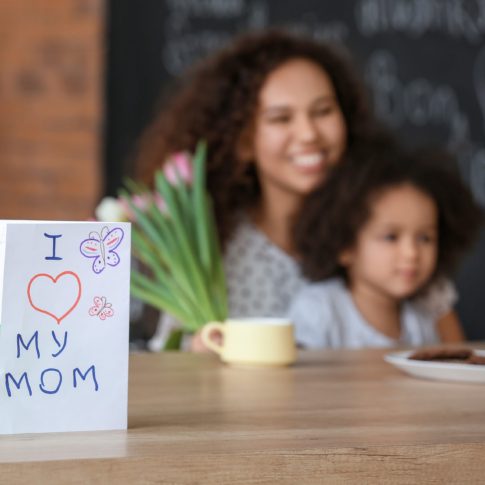“It is unclear whether child-care issues will prevent women from returning to employment as the economy recovers,” wrote economist Betsey Stevenson (University of Michigan) in a July 2020 essay for The Hamilton Project. In the essay, Stevenson laid out a set of economic indicators and issues that if left unresolved, could lead to permanent labor market scarring following the COVID-19 pandemic. In recent months, the concerns raised by Stevenson about women and the labor market have, unfortunately, come true.
In the paper “Ten economic facts about how mothers spend their time,” my colleagues and I document some of the ways in which the labor market trajectory of mothers prior to the pandemic has not only been disrupted, but meaningfully turned back. In this piece, I provide new evidence that mothers—particularly mothers of children under five and unmarried mothers—are being left behind in the economic recovery from COVID-19.
The COVID-19 pandemic has widened labor force participation gaps between mothers and fathers.[i] The LFPR of mothers overall was about 3.5 percentage points lower in March 2021 than in January 2020 (not shown) while fathers’ LFPR was down 1 percentage point. Moreover, the age of the children in the household contributes to differences in labor force participation rates (LFPR) during the COVID-19 pandemic (figure 1). While LFPRs of mothers whose youngest child is a teenager have rebounded to about 1.5 percentage points below its January 2020 level, mothers whose youngest children is under 13 are more than 4 percentage points below.
In January 2020, single mothers had the highest LFPR of the female groups at just over 81 percent. Since then, the LFPR fell the most among single mothers of the groups examined — with a decline of about 7.5 percentage points — and their rate has been the slowest to recover. As of March 2021, the LFPR for single mothers is a full 5 percentage points below its January 2020 rate.
Many have found evidence that school closures have resulted in women exiting the labor market. The Fall Survey of Mothers with Young Children (Fall SMYC) asked why: whether they left their job due to child care responsibilities and whether respondents lost their job because of an employer’s decision. In addition, among those who reported being in the labor force as of October 2020, the survey asked two other questions: whether the respondent “had a serious conversation about leaving your job or formally shifting to part-time work to take care of your child?” and “How difficult would you say it is for you personally to balance the responsibilities of your work with the responsibilities of your family?” Figure 2 shows exclusive categories of responses to these four questions, by marital status and the age of one’s youngest child.
About 14 percent of unmarried mothers and mothers whose youngest child was under the age of 6 reported that they left their job due to child-care responsibilities in 2020 compared with 8 percent of mothers with children 6 to 12. While more than 7 percent of each group lost their job during the COVID-19 pandemic from March to October, 11 percent of unmarried mothers did. Taken together, a quarter of unmarried mothers reported that they left or lost their job in 2020 compared with 18 percent of married mothers.
Mothers with children under 6 were most likely to report having a serious conversation about leaving their job or reducing their hours due to child-care challenges and/or finding it very difficult to balance work and family responsibilities. However, these weighty conversations and daily stresses were reported with high frequency among all of those who were employed at the time of the Fall SMYC and who did not report having left or lost their job.

Families with children, and specifically single mother households, have experienced high levels of material hardship over the past year. Figure 3 shows the share of adult respondents to the Census Household Pulse Survey who reported food insecurity at key points over the past year. This analysis, by Diane Whitmore Schanzenbach and Abigail Pitts, describes rates of very low food security (i.e., hunger) and low food security for single mothers, respondents with children, and all respondents during three survey weeks: the beginning of the pandemic (April 2020), the peak of food insecurity (December 2020), and just a few weeks ago (late March 2021).
The Schanzenbach and Pitts analysis finds that throughout the pandemic, single mother households have had the highest rates of food insecurity, the highest rates of hunger, and the highest ratios of hunger to low food security. As of late March 2021, single mothers had a higher rate of food insecurity (almost 35 percent) than respondents with children or all households had at any point during the pandemic.

During the COVID-19 pandemic, not everyone had the opportunity or flexibility to care for their children and keep their job, not everyone had a spouse or partner with whom one could share caregiving burdens, not everyone has an employer or job responsibilities that allow for juggling, not everyone could make ends meet. As of March 2021, mothers are lagging behind fathers in returning to pre-pandemic LFPRs and are experiencing material hardship as measured by food insecurity.
As the U.S. exits the acute COVID-19 crisis, long-run trouble finding affordable child-care slots, child-care workers experiencing high levels of job loss, and the diminished supply of child care slots will hold some mothers back. This analysis shows that absent a care infrastructure to support those with the highest caregiving responsibilities — mothers with children under five and unmarried mothers — in times of crisis, many will leave the labor force to care for their children, will struggle to come back, and will cope with a lifetime of consequences.
On May 12, The Hamilton Project will hold an event that offers solutions to support women in the labor market, “Rethinking the economics of child care and paid leave: Policies to protect workers and families.” At this event, The Hamilton Project will release new policy proposals on expanding access to high-quality affordable child care (from Elizabeth E. Davis and Aaron Sojourner) and paid family and medical leave (from Tanya Byker and Elena Patel). The Hamilton Project has offered many proposals to address child care (by Elizabeth Cascio, Elizabeth Cascio and Diane Schanzenbach, Bridget Terry Long, and James Ziliak) and paid leave (Nicole Maestas and Christopher Ruhm) in addition to volumes on economic downturns (Recession Ready) and economic security for women (The 51%: Driving Growth through Women’s Economic Participation).
May 19 Update
On May 12, The Hamilton Project released two new policy proposals relevant to support women’s labor force participation. In “Increasing Federal Investment in Children’s Early Care and Education to Raise Quality, Access, and Affordability,” Aaron Sojourner and Elizabeth Davis provide a rationale for and path to greater public investment in young children. In “A Proposal for a Federal Paid Parental and Medical Leave Program” Tanya Byker and Elena Patel offer a proposal to establish a national and comprehensive paid leave program. You can view the recording of the webcast here.

Policy proposals like these, and those referenced above, are acutely necessary now to support women’s full participation in the economic recovery from COVID-19. Women’s difficulty in remaining attached to the labor force over the course of the past year is well-documented and persistent (see the above update to figure 1 that includes April 2021 data).
Acknowledgements: The author thanks Diane Whitmore Schanzenbach and Abigail Pitts for sharing their analysis of food insecurity rates for this piece. Wendy Edelberg, Michael Madowitz, and Kriston McIntosh kindly shared welcome feedback and Stephanie Lu and Madison Bober provided excellent research assistance.
Endnotes:
[i] Reductions in the labor force participation rate come from labor market exits; those who are working or unemployed (i.e. actively seeking work) are labor force participants while those who are not working (for whatever reason include caregiving) or are not seeking work are not in the labor force.



